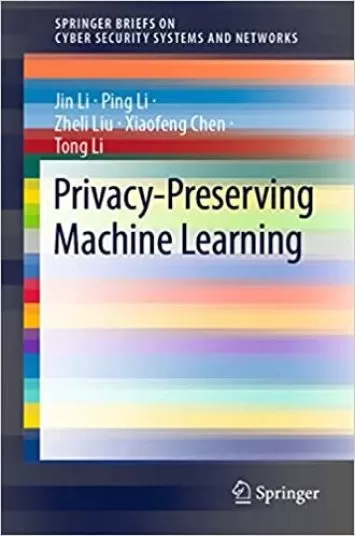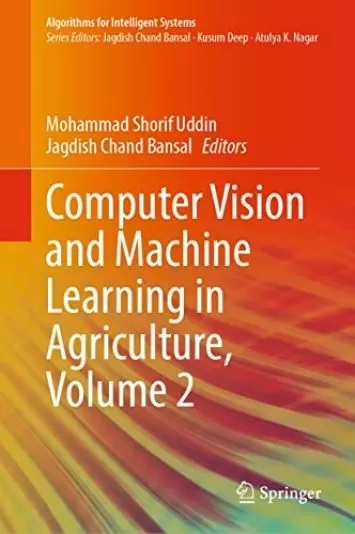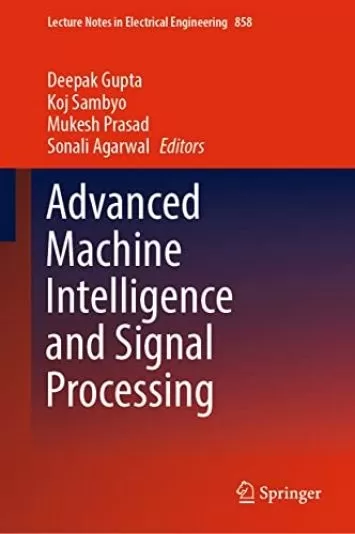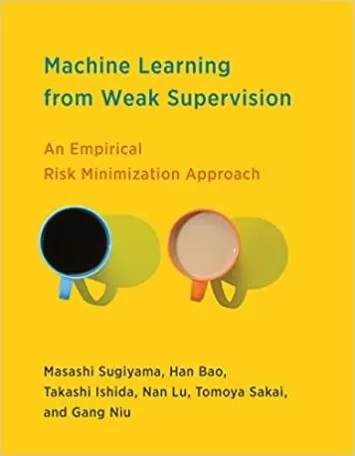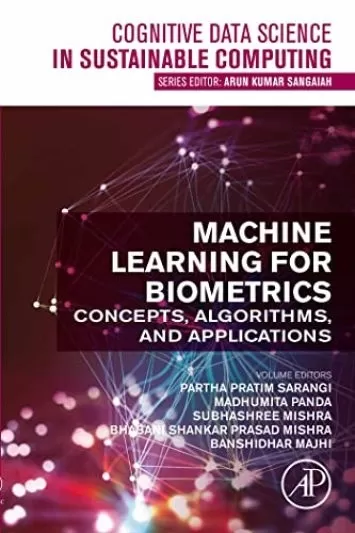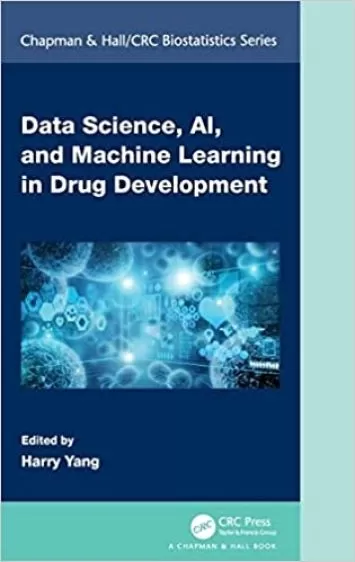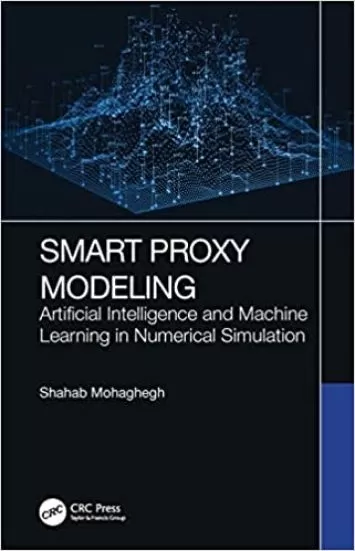About Machine LearningLearn More
A machine learning course teaches you the technology and concepts behind predictive text, virtual assistants, and artificial intelligence. You can develop the foundational skills you need to advance to building neural networks and creating more complex functions through the Python and R programming languages. Machine learning training helps you stay ahead of new trends, technologies, and applications in this field.
Sort by:
Sorting
The newest
Most visited
Course time
Subtitle
Filtering
Courses
Subtitle

Udemy


Kate Alison
Machine Learning in R: Land Use Land Cover Image Analysis 5:38:27
English subtitles
10/16/2024
Subtitle

Udemy


Kate Alison
Machine Learning in R & Predictive Models | 3 Courses in 1 7:37:10
English subtitles
10/16/2024
Subtitle
![Data Science and Machine Learning Fundamentals [2024]](https://traininghub.ir/image/course_pic/40928.jpg)
Udemy


Henrik Johansson
Data Science and Machine Learning Fundamentals [2024] 47:51:20
English subtitles
09/25/2024
Subtitle

Udemy


Data Bootcamp
Complete MLOps Bootcamp | From Zero to Hero in Python 2022 10:22:03
English subtitles
09/25/2024
Subtitle

Linkedin Learning


Archana Vaidheeswaran
Learning TinyML: A Hands-On Course 1:10:50
English subtitles
09/19/2024

Udemy


Manifold AI Learning ®
NVIDIA-Certified Associate - Generative AI LLMs (NCA-GENL) 17:54:15
09/14/2024
Subtitle

Pluralsight


Swetha Kolalapudi
How to Think About Machine Learning Algorithms 3:08:38
English subtitles
08/31/2024
Subtitle

Linkedin Learning


Emilio Melo
Azure AI Fundamentals (AI-900) Cert Prep: 2 Principles of Machine Learning on Azure 1:05:57
English subtitles
08/29/2024
Books
Frequently asked questions about Machine Learning
Machine learning describes systems that make predictions using a model trained on real-world data. For example, let's say we want to build a system that can identify if a cat is in a picture. We first assemble many pictures to train our machine learning model. During this training phase, we feed pictures into the model, along with information around whether they contain a cat. While training, the model learns patterns in the images that are the most closely associated with cats. This model can then use the patterns learned during training to predict whether the new images that it's fed contain a cat. In this particular example, we might use a neural network to learn these patterns, but machine learning can be much simpler than that. Even fitting a line to a set of observed data points, and using that line to make new predictions, counts as a machine learning model.
Machine learning is being applied to virtually every field today. That includes medical diagnoses, facial recognition, weather forecasts, image processing, and more. In any situation in which pattern recognition, prediction, and analysis are critical, machine learning can be of use. Machine learning is often a disruptive technology when applied to new industries and niches. Machine learning engineers can find new ways to apply machine learning technology to optimize and automate existing processes. With the right data, you can use machine learning technology to identify extremely complex patterns and yield highly accurate predictions.
It's possible to use machine learning without coding, but building new systems generally requires code. For example, Amazon’s Rekognition service allows you to upload an image via a web browser, which then identifies objects in the image. This uses a pre-trained model, with no coding required. However, developing machine learning systems involves writing some Python code to train, tune, and deploy your models. It's hard to avoid writing code to pre-process the data feeding into your model. Most of the work done by a machine learning practitioner involves cleaning the data used to train the machine. They also perform “feature engineering” to find what data to use and how to prepare it for use in a machine learning model. Tools like AutoML and SageMaker automate the tuning of models. Often only a few lines of code can train a model and make predictions from it. An introductory understanding of Python will make you more effective in using machine learning systems.
Python is the most used language in machine learning. Engineers writing machine learning systems often use Jupyter Notebooks and Python together. Jupyter Notebooks is a web application that allows experimentation by creating and sharing documents that contain live code, equations, and more. Machine learning involves trial and error to see which hyperparameters and feature engineering choices work best. It's useful to have a development environment such as Python so that you don't need to compile and package code before running it each time. Python is not the only language choice for machine learning. Tensorflow is a popular framework for developing neural networks and offers a C++ API. There is a machine learning framework for C# called ML.NET. Scala or Java are sometimes used with Apache Spark to build machine learning systems that ingest massive data sets. You may find yourself using many different languages in machine learning, but Python is a good place to start.
Machine learning is generally divided between supervised machine learning and unsupervised machine learning. In supervised machine learning, we train machine learning models on labeled data. For example, an algorithm meant to detect spam might ingest thousands of email addresses labeled 'spam' or 'not spam.' That trained model could then identify new spam emails even from data it's never seen. In unsupervised learning, a machine learning model looks for patterns in unstructured data. One type of unsupervised learning is clustering. In this example, a model could identify similar movies by studying their scripts or cast, then group the movies together into genres. This unsupervised model was not trained to know which genre a movie belongs to. Rather, it learned the genres by studying the attributes of the movies themselves. There are many techniques available within these two types of machine learning, for example: deep learning, reinforcement learning, and more.
Machine learning is one of the fastest-growing and popular computer science careers today. Constantly growing and evolving, you can apply machine learning to a variety of industries, from shipping and fulfillment to medical sciences. Machine learning engineers work to create artificial intelligence that can better identify patterns and solve problems. The machine learning discipline frequently deals with cutting-edge, disruptive technologies. However, because it has become a popular career choice, it can also be competitive. Aspiring machine learning engineers can differentiate themselves from the competition through certifications, boot camps, code repository submissions, and hands-on experience.
Machine learning is a smaller subset of the broader spectrum of artificial intelligence. While artificial intelligence describes any "intelligent machine" that can derive information and make decisions, machine learning describes a method by which it can do so. Through machine learning, applications can derive knowledge without the user explicitly giving out the information. This is one of the first and early steps toward "true artificial intelligence" and is extremely useful for numerous practical applications. In machine learning applications, an AI is fed sets of information. It learns from these sets of information about what to expect and what to predict. But it still has limitations. A machine learning engineer must ensure that the AI is fed the right information and can use its logic to analyze that information correctly.
A machine learning engineer will need to be an extremely competent programmer with in-depth knowledge of computer science, mathematics, data science, and artificial intelligence theory. Machine learning engineers must be able to dig deep into complex applications and their programming. As with other disciplines, there are entry-level machine learning engineers and machine learning engineers with high-level expertise. Python and R are two of the most popular languages within the machine learning field.






















